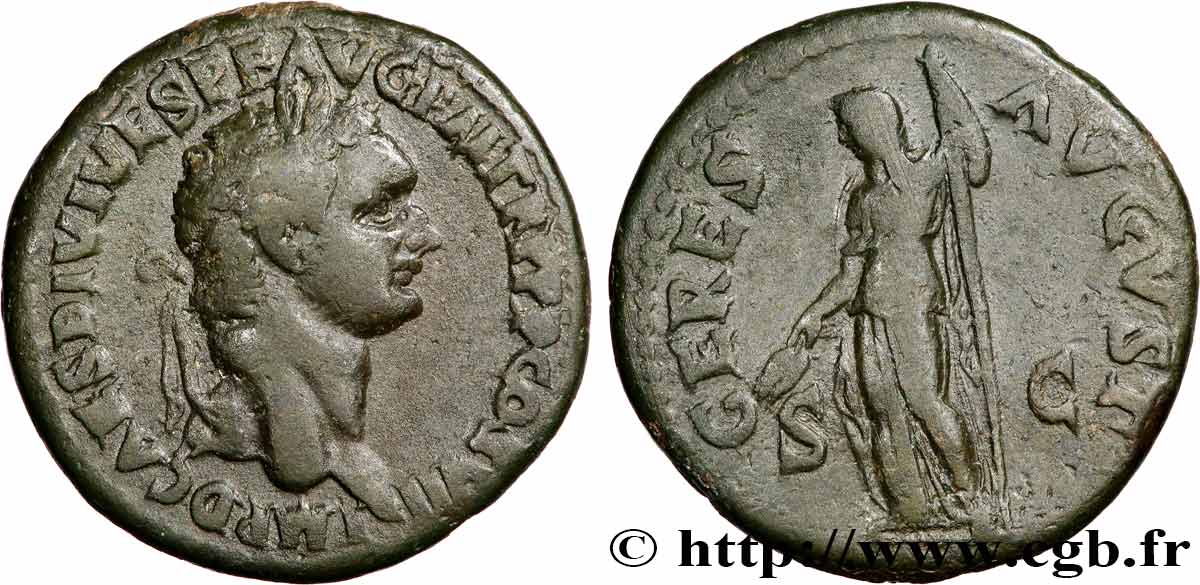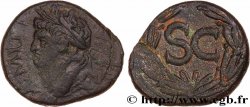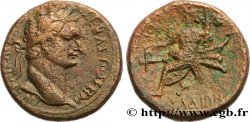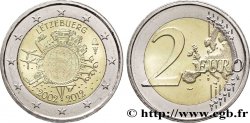brm_783056 - DOMITIANUS As
Nicht verfügbar.
Artikel auf unserem Online-Shop verkauft (2024)
Preis : 175.00 €
Artikel auf unserem Online-Shop verkauft (2024)
Preis : 175.00 €
Type : As
Datum: 81
Name der Münzstätte / Stadt : atelier indéterminé
Metall : Kupfer
Durchmesser : 26 mm
Stempelstellung : 6 h.
Gewicht : 10,54 g.
Seltenheitsgrad : R1
Kommentare zum Erhaltungszustand:
Monnaie idéalement centrée à l’usure régulière. Joli portrait de Domitien. Patine foncée
N° im Nachschlagewerk :
Vorderseite
Titulatur der Vorderseite IMP D CAES DIVI VESP F DOMITIAN AVG P M P P TR P COS VII.
Beschreibung Vorderseite Tête laurée de Domitien à droite (O*).
Übersetzung der Vorderseite "Imperator Cæsar Divi Vespasiani Filius Domitianus Augustus Pontifex Maximus Pater Patriæ Tribunicia Potestate Consul septimum", (L’empereur césar fils du divin Vespasien Domitien auguste grand pontife père de la patrie revêtu de la puissance tribunitienne consul pour la septième fois).
Rückseite
Titulatur der Rückseite CERES - AVGVST/ S|C.
Beschreibung Rückseite Cérès voilée et drapée debout à gauche, tenant des épis de la main droite et un sceptre ou une torche de la main gauche.
Übersetzung der Rückseite “Ceres Augusti”, (Cérès de l’auguste).
Kommentare
Suivant les ouvrages, ce type est donné à l’atelier de Rome (Sear), à l’atelier de Lyon (pour les auteurs du RIC et du BMC), à un atelier de Bithynie (Giard BN/R). Le style particulier, le choix de la légende de droit pourrait laisser entrevoir une émission très courte et homogène pour le bronze visant à marquer l’accession du nouvel empereur après la disparition de son frère Titus. J.-B. Giard, dans son dernier volume consacré au monnayage de l’atelier rhodanien, ne retient pas ce type monétaire. Le style très particulier pourrait laisser Rome de côté. Alors pourquoi un atelier qui n’aurait fonctionné que trois mois et dans la province de Pont-Bithynie ? La question reste posée, mais sans réponse car ce monnayage reste rare.
Depending on the works, this type is given at the workshop in Rome (Sear), at the workshop in Lyon (for the authors of the RIC and BMC), at a workshop in Bithynia (Giard BN/R). The particular style, the choice of the right legend could suggest a very short and homogeneous issue for the bronze aimed at marking the accession of the new emperor after the disappearance of his brother Titus. J.-B. Giard, in his last volume devoted to the coinage of the Rhone workshop, does not retain this monetary type. The very particular style could leave Rome aside. So why a workshop that only operated for three months and in the province of Pont-Bithynie? The question remains asked, but without an answer because this coinage remains rare
Depending on the works, this type is given at the workshop in Rome (Sear), at the workshop in Lyon (for the authors of the RIC and BMC), at a workshop in Bithynia (Giard BN/R). The particular style, the choice of the right legend could suggest a very short and homogeneous issue for the bronze aimed at marking the accession of the new emperor after the disappearance of his brother Titus. J.-B. Giard, in his last volume devoted to the coinage of the Rhone workshop, does not retain this monetary type. The very particular style could leave Rome aside. So why a workshop that only operated for three months and in the province of Pont-Bithynie? The question remains asked, but without an answer because this coinage remains rare








 Berichten über einen Fehler
Berichten über einen Fehler Die Seite drucken
Die Seite drucken Teilen meiner Auswahl
Teilen meiner Auswahl Stellen Sie eine Frage
Stellen Sie eine Frage Einlieferung/Verkauf
Einlieferung/Verkauf
 Details
Details















